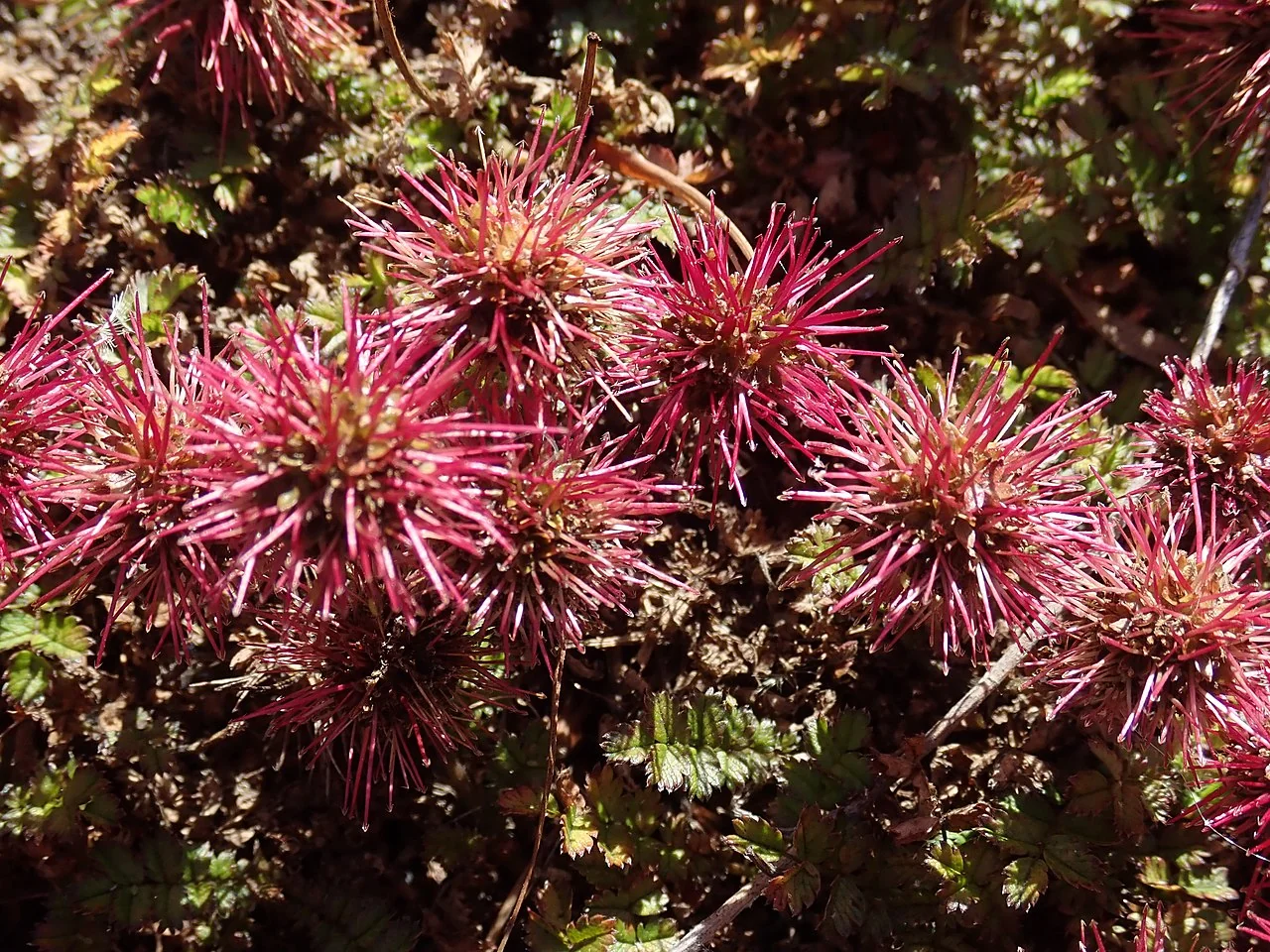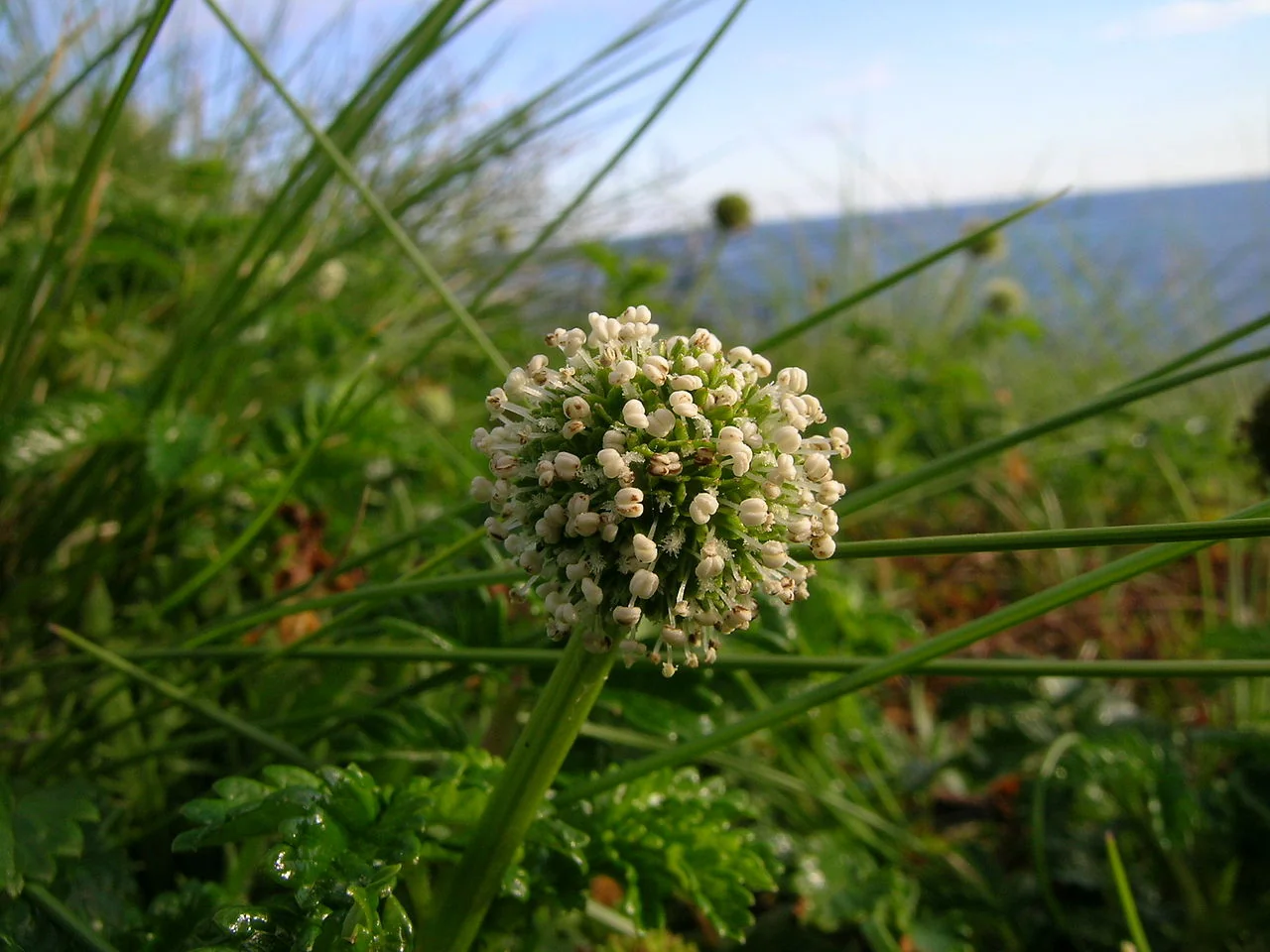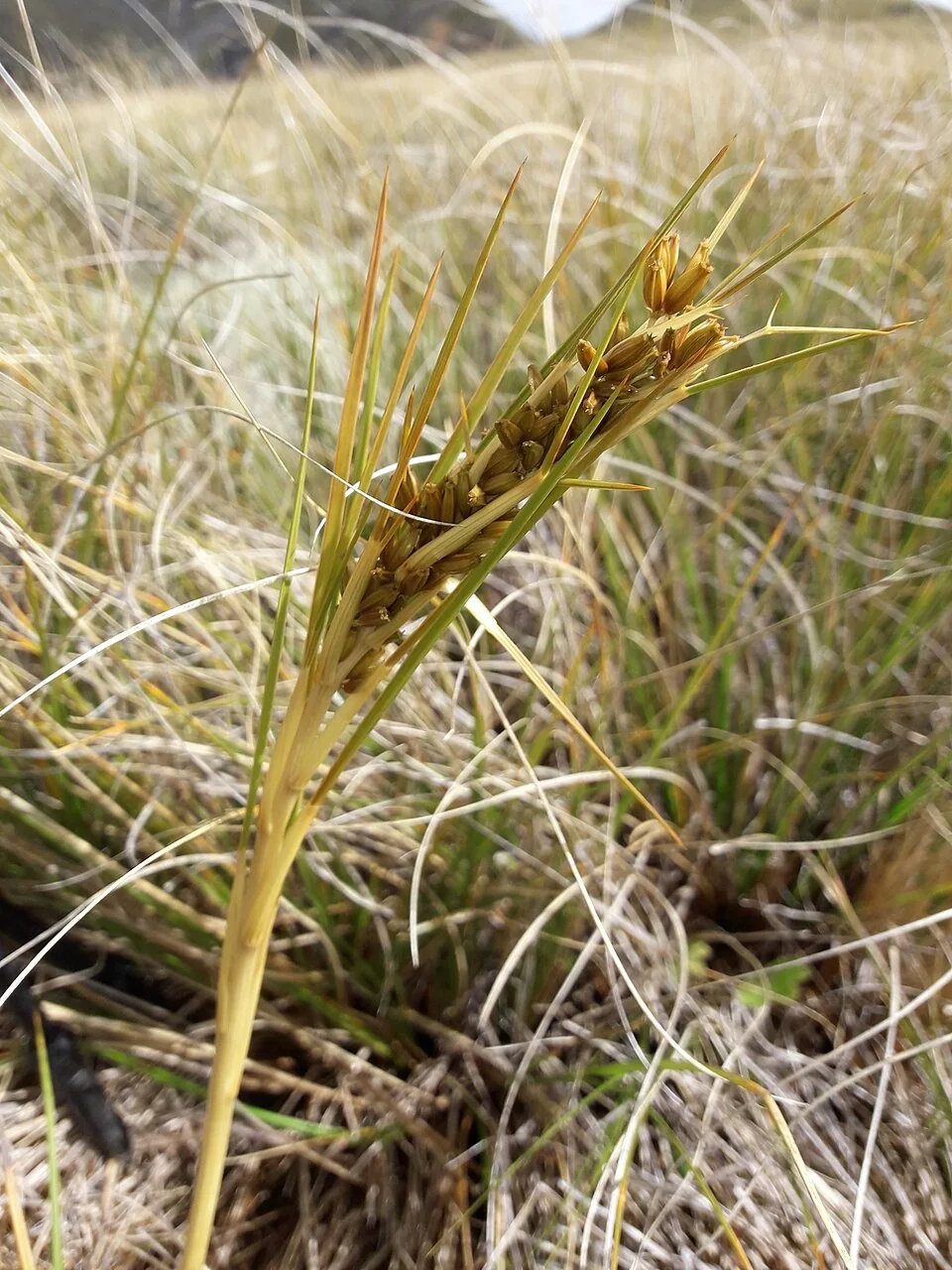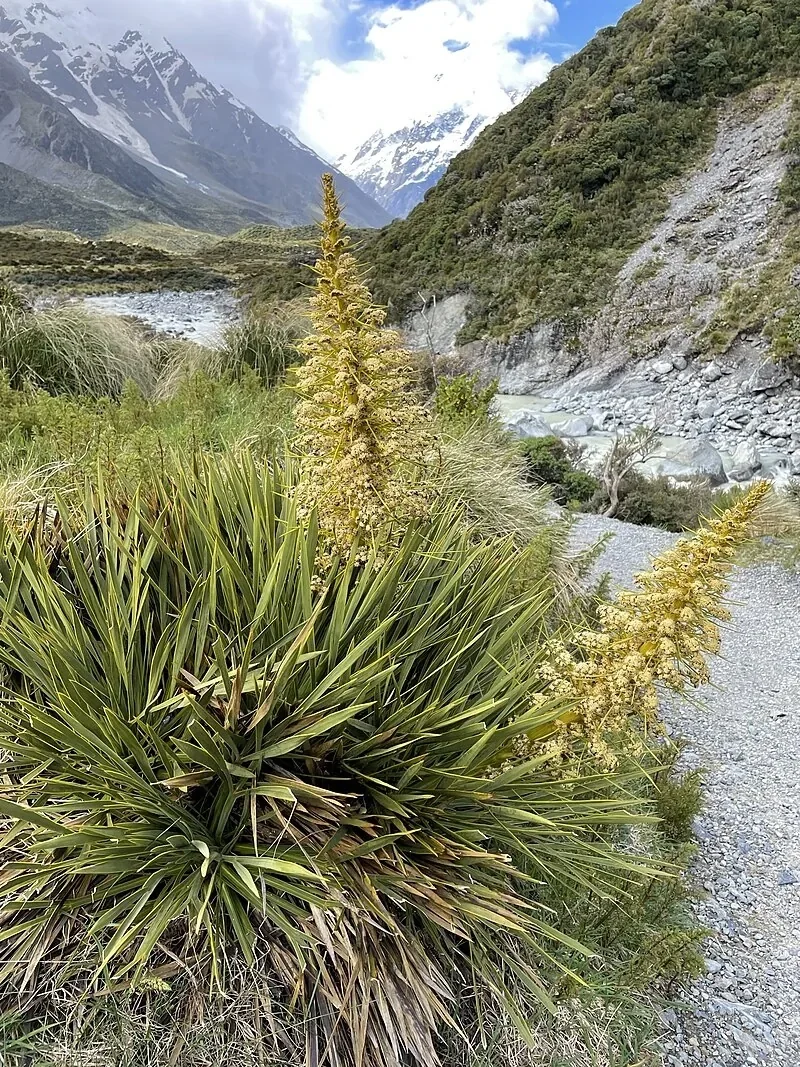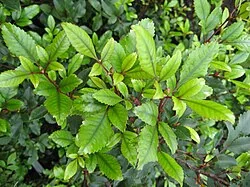
Kāmahi
Weinmannia racemosa
Kāmahi is a fast-growing evergreen tree reaching 15-25 meters tall, distinguished by its compound leaves with serrated leaflets and spectacular displays of creamy-white flowers that cover the entire crown in spring and summer. This adaptable species has attractive reddish-brown bark and serves as an excellent pioneer tree for revegetation projects. Found throughout New Zealand's lowland and montane forests, it produces abundant nectar that attracts native birds and beneficial insects, making it invaluable for both ecological restoration and garden wildlife among New Zealand's native trees .

Plant Description
Botanical Features
Kāmahi ( Weinmannia racemosa ) is a distinctive native plant with unique botanical characteristics that make it well-suited to New Zealand's diverse environments. This species exhibits typical features of its genus and family, with specialized adaptations that allow it to thrive in its natural habitat. The plant 's morphological features, including its leaf structure, growth habit, and reproductive characteristics, reflect millions of years of evolution in New Zealand's isolated environment. Understanding the botanical description of Kāmahi helps gardeners appreciate its unique characteristics and provides insight into its cultivation requirements and ecological role.
Quick Facts
Quick Facts Overview
| Scientific Name | Weinmannia Racemosa |
|---|---|
| Height | 15-25 meters |
| Spread | 8-15 meters |
| Water Needs | Moderate to high |
| Light | Full sun to partial shade |
| Frost Tolerance | Moderate (hardy to -8°C) |
| Salt Tolerance | Low |
| Growth Rate | Fast |
| Lifespan | 100-200 years |
Climate Best Suited to
Kāmahi grows throughout New Zealand from sea level to 1100 meters elevation in lowland and montane forests. It thrives in cool, moist climates with regular rainfall and performs best in areas with mild temperatures and high humidity. This adaptable species tolerates a range of conditions but struggles in very dry or very hot locations.
Regional Suitability
| Whangārei | Ideal |
| Auckland | Ideal |
| Hamilton | Suitable |
| Rotorua | Suitable |
| Tauranga | Ideal |
| Gisborne | Ideal |
| New Plymouth | Ideal |
| Whanganui | Ideal |
| Palmerston North | Suitable |
| Napier | Ideal |
| Wellington | Ideal |
| Nelson | Ideal |
| Christchurch | Suitable |
| Dunedin | Suitable |
| Invercargill | Suitable |
| City | Climate Suitability |
|---|
Plant Habitat
Weinmannia racemosa , commonly known as Kāmahi, is one of New Zealand's most abundant and widespread native trees, thriving in a diverse range of habitats from sea level up to 1100 meters elevation. It is found throughout New Zealand forests, from the North Island (south of latitude 37°) to the South Island and Stewart Island.
Key Habitat Characteristics:
- Distribution: Widespread across New Zealand's forests, including lowland and montane areas.
- Altitude: Occurs from sea level up to 1100 meters.
- Climate: Prefers cool, moist climates with regular rainfall, performing best in areas with mild temperatures and high humidity. It can tolerate snowfall up to 1 meter deep but is less tolerant of lower rainfall in the rain shadow of the Southern Alps.
- Rainfall: Thrives in climates where minimum annual rainfall exceeds 800 mm, and can grow in areas with over 5000 mm of rainfall.
- Soils: Highly adaptable to a broad range of soil types, including podzols, volcanic ash, clay, loam, or sandy soils, provided there is adequate drainage. It prefers well-drained, fertile, and moisture-retentive soils, often found in humus-rich forest soils. It can also grow on thin soils prone to creep and erosion.
- Light: Tolerates full sun to partial shade, and can grow in filtered forest light when young. Best flowering occurs in full sun.
Kāmahi is a major component of many New Zealand forest ecosystems, including those on Stewart Island, and is a common species in protection forests, highlighting its ecological significance and adaptability.
Plant Conservation
Weinmannia racemosa , commonly known as Kāmahi, is an evergreen tree endemic to New Zealand. Its conservation status is currently "Not Threatened" and it is widespread throughout New Zealand's forests. It demonstrates good adaptability to various forest environments and is not considered endangered.
As a dominant canopy species in many New Zealand forests, Kāmahi plays a crucial role in ecosystem health. Its abundance and resilience contribute significantly to the biodiversity and ecological stability of its native habitats.
Growing Requirements
Soil Requirements
Kāmahi is adaptable to various soil types but prefers fertile conditions:
- Well-drained but moisture-retentive soils preferred
- Tolerates clay , loam, or sandy soils if drainage adequate
- Performs best in fertile, humus-rich forest soils
- Suitable for slightly acidic to neutral pH (5.5-7.0)
- Benefits from organic matter and leaf litter around base
Light Requirements
Kāmahi performs well in various light conditions:
- Full sun to partial shade (very adaptable)
- Can tolerate filtered forest light when young
- Best flowering occurs in full sun locations
- Morning sun exposure particularly beneficial
Water Requirements
Kāmahi requires consistent moisture for optimal growth:
- Regular watering during establishment (first 2-3 years)
- Consistent soil moisture preferred throughout growing season
- Moderate drought tolerance once established
- Benefits from mulching to retain soil moisture
- Sensitive to extended dry periods during flowering
Planting Guide
When to Plant
Plant Kāmahi during autumn or spring when soil conditions are optimal. This fast -growing species establishes quickly when planted during favorable weather conditions.
Site Selection
Choose a site with:
- Full sun to partial shade with morning sun preferred
- Well-drained soil with good moisture retention
- Protection from strong winds during establishment
- Space for mature size (25 m tall, 12 m spread)
Planting Procedure
- Dig hole 2-3 times wider than root ball, same depth
- Improve soil with compost for better moisture retention
- Position tree so root collar sits at natural soil level
- Backfill with improved soil, watering as you progress
- Create watering basin around tree for establishment
- Water thoroughly to settle soil and eliminate air pockets
- Apply 10cm layer of organic mulch around base
Initial Care
Provide regular watering during first 2-3 years until established. Kāmahi's fast growth means it quickly becomes self-sufficient but benefits from consistent care during establishment.
Ecological Role
Environmental Impact
Kāmahi serves as a dominant canopy species in many New Zealand forests , creating important habitat structure and food resources through its abundant nectar-rich flowers that support numerous native birds, bees, and other pollinators. The tree plays crucial roles in forest succession, often forming pure stands in regenerating areas while providing nurse habitat for other forest species to establish. Its dense foliage supports diverse epiphyte communities and provides nesting sites for native birds, while the extensive root system helps stabilize forest soils and maintain watershed integrity in both lowland and montane forest ecosystems.
Uses and Significance
Traditional Māori Uses
Kāmahi holds significant traditional importance for Māori. The bark was boiled to create a chest tonic for ailments such as flu, bronchitis, and heavy chest colds. The inner bark, known for its antiseptic qualities, was also boiled to produce a decoction used to bathe wounds and burns, promoting healing.
Timber and Dyeing
The wood of Kāmahi, with a density between 600 and 720 kg/m³, has been used for cabinet making and ornamental work. Although its durability can be low, it has been employed for fence posts, sleepers, house blocks, and wharf piles, especially when treated. The bark is rich in tannic acid (around 13% tannin content), which was historically used for tanning leather and for producing a strong, permanent dark black dye. This high tannin content led to its export and significant use by tanners in earlier days. The bark was also used to dye fishing lines for preservation and to stain mats.
Ecological Role and Modern Uses
Ecologically, Kāmahi serves as a nurse species, capable of growing in a wide range of sites and under various conditions, including shade. It can help nurse more important timber trees like rimu and is suitable for native garden restoration projects, shelterbelts, and enhancing biodiversity. Its flowers attract bees and birds, contributing to the ecosystem.
Cultural Significance
Weinmannia racemosa , commonly known as Kāmahi, holds profound cultural and ecological importance, particularly within Māori culture in New Zealand. Its uses span medicinal, practical, and symbolic realms.
Māori Cultural Significance and Traditional Uses:
- Ecological Indicator: Kāmahi's abundant white flowers served as markers in traditional ecological calendars, signaling seasonal abundance and overall forest health. It remains an indicator of pristine native forest conditions.
- Dye Production: The bark of the Kāmahi tree was a crucial source of a reddish, permanent dye. This dye was used by Māori to colour cloaks and mats made from materials like harakeke (flax), kiekie, and tī kōuka. The dye was also believed to have preservative qualities, leading to its use for soaking fishing lines. During the 19th century, Kāmahi-based dyes were even exported.
- Medicinal Applications: Māori traditionally used Kāmahi as a chest tonic to treat ailments such as the flu, bronchitis, and heavy chest colds, prepared by boiling and consuming the plant material. The inner bark was boiled to create a decoction used for bathing wounds and burns, valued for its antiseptic and healing properties. Other medicinal uses included a purgative decoction, a tonic from bark infused in boiling water, and a laxative.
- Timber and Other Practical Uses: The wood was utilized in cabinet making and ornamental work. Historically, it was also employed for sleepers, house piles, and fence posts. The high tannin content in the bark made it valuable for tanning leather. Among the Tūhoe people, the wood, referred to as tawhero, was used for crafting larger, heavier, and unadorned handles for adzes used in rough timber work.
- Protection and Tapu: In pre-European Māori society, Kāmahi was considered so valuable that it was protected by tapu (a sacred prohibition).
- Honey Production: Kāmahi is recognized as an important source of nectar, and beekeepers specifically seek out Kāmahi forests to produce a distinctive bush honey.
Landscaping Uses
Weinmannia racemosa , commonly known as Kāmahi, is a versatile and adaptable native New Zealand tree with numerous landscaping applications, particularly valued in native and ecological garden designs.
Key Landscaping Applications:
- Native Gardens and Restoration Projects: Ideal for native gardens, reforestation, and biodiversity enhancement plantings. It thrives in diverse environments and plays a crucial role in forest succession, acting as a nurse crop for other native species.
- Shelter and Structure: Provides excellent shade and structural elements in a landscape. Its wind resistance, once established, makes it suitable for shelter planting and creating effective shelterbelts.
- Specimen and Background Tree: With its attractive foliage and spectacular creamy-white flowers, Kāmahi can serve as a striking specimen tree or as a robust background tree in both naturalistic and more formal landscapes.
- Wildlife Support: Its abundant flowers attract pollinators like bees, and the tree provides food and habitat for various native birds, significantly contributing to local biodiversity.
- Large-Scale Plantings: Due to its potential height of 10-25 meters, it is well-suited for parks, large gardens, and for creating natural screening.
- Erosion Control: This versatile plant can also be effectively utilized for erosion control on slopes and unstable ground.
Seasonal Care Calendar
Spring
- New growth emerges with fresh green compound leaves
- First flush of spectacular white flowers begins
- Best time for planting new specimens
- Begin regular watering schedule for young trees
Summer
- Peak flowering period with masses of creamy-white blooms
- High nectar production attracts maximum bird and bee activity
- Ensure adequate watering during warm periods
- Fast growth rate most apparent during summer months
Autumn
- Seeds develop in small capsules following flowering
- Good time for planting before winter
- Some leaves may develop attractive autumn tints
- Collect seeds for propagation when available
Winter
- Growth slows with good cold tolerance in suitable areas
- Some frost damage possible in coldest locations
- Best time for structural pruning if needed
- Reduce watering frequency during dormant period
When to Prune and How Much
When to Prune and How Much Overview
Kāmahi naturally develops good form but may benefit from light pruning:
- Remove dead , diseased, or damaged branches any time
- Light structural pruning for young trees to develop good leader
- Can be pruned to maintain desired size if space limited
- Late winter to early spring best timing for major pruning
- Responds well to pruning with vigorous new growth
Use sharp , clean tools and make cuts just outside the branch collar. Kāmahi has excellent wound response and tolerates pruning well, making it suitable for size management.
How to Grow Kāmahi
Kāmahi is a beautiful and ecologically important native tree that is relatively straightforward to grow, especially when its preferences for a cool, moist environment are met. It is a fast-growing species that can be used in a variety of settings, from forest restoration projects to specimen plantings in larger gardens. Its spectacular floral displays and attractive foliage make it a valuable addition to any landscape, providing both aesthetic appeal and ecological benefits by attracting native birds and insects.
From Seed
Kāmahi can be easily grown from seed, and fresh seeds generally yield the best germination rates. Collect the small seed capsules in autumn once they have ripened and begun to split open. Clean the tiny seeds from any chaff and sow them immediately onto the surface of a well-draining seed-raising mix. Lightly cover the seeds with a fine layer of sand or vermiculite. Maintain consistent moisture in the seed tray and keep it in a warm environment, ideally between 20-25°C. Germination typically occurs within 2-4 weeks. Once the seedlings have developed a few true leaves and are large enough to handle, they can be carefully transplanted into individual pots and grown on in a sheltered location before planting out into the garden.
From Cuttings
Kāmahi can also be propagated from semi-hardwood cuttings, although success rates can be moderate (around 40-60%). Take cuttings from healthy, current year's growth in late summer or early autumn. Cuttings should be about 4-6 inches long. Remove the lower leaves and, if desired, dip the cut end in a rooting hormone to encourage root development. Insert the cuttings into a well-draining cutting mix, such as a blend of perlite and peat. It is crucial to maintain high humidity around the cuttings, which can be achieved by placing them under a plastic dome or in a propagator, while also ensuring good air circulation to prevent fungal issues. Rooting usually takes between 6-10 weeks. Once rooted, the new plants can be potted on and grown in a sheltered environment until they are ready for planting.
Pests and Diseases
Scale Insects
- Damage: Various scale species may infest leaves and young branches
- Symptoms: Sticky honeydew , yellowing leaves, reduced flowering
- Management: Horticultural oil sprays; encourage beneficial insects; maintain tree vigor
Leaf Spot Diseases
- Cause: Fungal pathogens during humid conditions
- Symptoms: Brown spots on compound leaves, premature leaf drop
- Management: Ensure good air circulation; avoid overhead watering; remove affected leaves
Root Rot
- Cause: Waterlogged soil conditions
- Symptoms: Yellowing foliage , reduced growth, branch dieback
- Management: Improve drainage ; avoid overwatering; ensure proper soil preparation
Possums and Browsing
- Damage: Browsing damage to young shoots and flowers
- Symptoms: Chewed leaves and flowers, reduced flowering
- Management: Install tree guards on young trees; possum control in affected areas
Kāmahi's vigorous growth means it typically recovers well from pest damage. Focus on maintaining good growing conditions for natural pest resistance.
Bonus Tip
Weinmannia racemosa , or Kāmahi, is a highly significant native tree in New Zealand. Beyond its ecological role as a fast-growing pioneer species that provides a 'nurse' habitat for other forest species, Kāmahi holds traditional importance for Māori. Its inner bark was used medicinally for chest ailments and wounds, while its tannin-rich bark was valued for tanning and producing a strong black dye.




